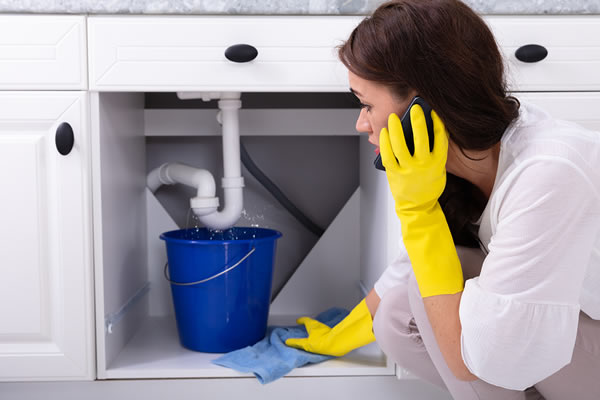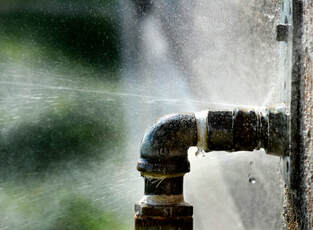Overview To Water Leakage Detection At Home
Overview To Water Leakage Detection At Home
Blog Article
Were you in search of tips concerning Leaking water lines?

Early detection of dripping water lines can alleviate a possible disaster. Some little water leakages might not be noticeable.
1. Take A Look At the Water Meter
Checking it is a surefire method that helps you uncover leaks. If it moves, that indicates a fast-moving leak. This means you might have a slow-moving leakage that might even be underground.
2. Check Water Intake
Analyze your water costs as well as track your water consumption. As the one paying it, you should see if there are any kind of disparities. If you find sudden changes, despite your intake being the same, it means that you have leakages in your plumbing system. Remember, your water costs ought to drop under the exact same range on a monthly basis. An unexpected spike in your costs suggests a fast-moving leakage.
A consistent boost every month, even with the very same habits, shows you have a slow-moving leak that's additionally slowly intensifying. Call a plumber to thoroughly inspect your home, specifically if you feel a warm location on your flooring with piping below.
3. Do a Food Coloring Test
When it comes to water usage, 30% comes from toilets. If the shade somehow infiltrates your bowl throughout that time without flushing, there's a leak between the container as well as dish.
4. Asses Outside Lines
Don't neglect to check your exterior water lines as well. Examination spigots by affixing a garden pipe. Ought to water leak out of the link, you have a loosened rubber gasket. Change this and also make certain all links are limited. If you have actually obtained a sprinkler system, it will help get it professionally analyzed and maintained annually. One little leak can squander lots of water as well as spike your water costs.
5. Examine the circumstance as well as evaluate
Property owners need to make it a routine to inspect under the sink counters as well as also inside cabinets for any type of bad odor or mold and mildew development. These two red flags suggest a leakage so punctual attention is called for. Doing routine evaluations, also bi-annually, can save you from a major issue.
Examine for discolorations and also compromising as most pipelines as well as appliances have a life expectancy. If you suspect leaking water lines in your plumbing system, do not wait for it to escalate.
Early discovery of leaking water lines can reduce a possible catastrophe. Some tiny water leaks may not be noticeable. Examining it is a guaranteed way that helps you uncover leaks. One small leak can squander heaps of water as well as surge your water expense.
If you think leaking water lines in your plumbing system, do not wait for it to rise.
How to Know If Your Home Has a Hidden Leak
Water Meter Reveals Inexplicable Water Usage
If you’d like to test whether or not there’s a leak somewhere in your home, you can do this using your water meter. Here is how to conduct the test:
Don’t use any water in your home for at least 30 minutes; this also means not turning on faucets or water-using appliances.
Go outside, and check your water meter for activity.
If your water meter shows that there was activity, even though no one was using any water, this proves that there is a leak in your home.Visible Mold or Mildew Growth
Leaks behind walls create moist, dark environments that allow mold and mildew to grow and thrive. Eventually, you might see mold growth forming on the wall closest to a hidden leak.
If mold is growing in an area that receives a high amount of moisture, such as a bathroom, it may simply be an indication that better ventilation is needed. However, if you see mold growth on a wall or the ceiling in an area where you would not expect, you probably have a hidden leak.
Musty, Mildew Odor
Sometimes you might not be able to see the mold or mildew that is growing as a result of a leak. However, the smell can give the problem away just as easily. If you catch a whiff of something musty, there’s a good chance that old water is collecting somewhere in your home that you can’t see.
Stained/Warped Walls, Ceilings, or Floors
When your home soaks up water, a variety of red flags can become visible, including ceiling stains, bubbling drywall, warped walls, and sagging floors. While these issues can be caused by excess humidity, they can also be signs that a pipe or plumbing connection has started leaking behind your walls.
Inexplicably High Water Bill
After a while, you get a general sense for what your water bill should be. If you own a pool or sprinkler system, your bill will tend to be higher during summer. However, if you receive a water bill that seems especially high, and you can’t figure out what caused it, then you may have a hidden leak somewhere that’s increasing your bill.
https://www.plumbingjoint.com/blog/2019/july/how-to-know-if-your-home-has-a-hidden-leak/

Do you appreciate reading about Detecting hidden plumbing leaks? Leave a remark further down. We would be delighted to know your reactions about this write-up. Hoping that you visit us again later on. Appreciated our blog entry? Please share it. Help somebody else discover it. Thanks a lot for going through it.
Report this page